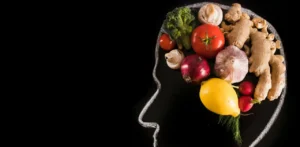Contents
- 1 Wilson’s Disease and Its Impact on Nutrition
- 2 The Role of Diet in Managing Wilson’s Disease
- 3 Best Foods for Wilson’s Disease
- 4 Wilson’s Disease-Friendly Meals
- 5 Nutrition During Wilson’s Disease Treatment
- 6 Wilson’s Disease Nutrition Tips
- 7 Wilson’s Disease Nutrition Therapy
- 8 Wilson’s Disease-Friendly Recipes
- 9 Dinner: Baked Cod with Vegetables
- 10 Ordering Healthy Food from IntRest
Wilson’s Disease is a rare genetic disorder that leads to excessive accumulation of copper in the body, primarily affecting the liver and brain. Managing this condition involves medical treatment and a careful approach to diet. In this post, we will explore the role of diet in Wilson’s Disease, highlighting the best foods and meal ideas to support patients.
Wilson’s Disease and Its Impact on Nutrition
Wilson’s Disease impairs the body’s ability to remove excess copper, resulting in toxic levels accumulating over time. This copper buildup can cause serious health problems, including liver damage, neurological issues, and psychiatric symptoms. Therefore, diet plays a crucial role in managing Wilson’s Disease by minimizing copper intake and supporting overall health.

The Role of Diet in Managing Wilson’s Disease
A Wilson’s Disease diet focuses on reducing copper intake and ensuring patients receive adequate nutrients to support their health. Here are some key dietary guidelines:
- Avoid High-Copper Foods: Patients should avoid foods high in copper, such as shellfish, liver, mushrooms, nuts, chocolate, and certain seeds.
- Emphasize Low-Copper Foods: Opt for foods low in copper, including dairy products, white bread, rice, and lean meats.
- Balance Nutrient Intake: Ensuring a well-rounded diet with adequate vitamins and minerals is essential to overall health.
- Consult with a Nutritionist: Personalized dietary advice from a nutritionist can help tailor a diet plan to individual needs.

Best Foods for Wilson’s Disease
Patients with Wilson’s Disease should focus on incorporating the following foods into their diet:
- Dairy Products: Milk, cheese, and yogurt are excellent sources of protein and calcium with low copper content.
- Grains: White bread, rice, pasta, and cereals are good carbohydrate sources that are generally low in copper.
- Fruits and Vegetables: While most vegetables are low in copper, it’s essential to avoid mushrooms and other high-copper varieties. Fruits like apples, bananas, and berries are good choices.
- Proteins: Lean meats such as chicken and turkey, and fish like cod and haddock are suitable low-copper protein sources.
Wilson’s Disease-Friendly Meals
Here are some meal ideas that are both nutritious and suitable for Wilson’s Disease patients:
- Breakfast: Oatmeal with sliced bananas and a glass of milk.
- Lunch: Grilled chicken salad with mixed greens (excluding spinach) and a side of white rice.
- Dinner: Baked cod with steamed broccoli and mashed potatoes.
- Snacks: Low-fat yogurt, apple slices, or rice cakes with a small amount of cream cheese.
Nutrition During Wilson’s Disease Treatment
During treatment, maintaining a balanced diet is crucial. Medications used in Wilson’s Disease, such as chelating agents, help remove excess copper but can also affect nutrient absorption. Here are some tips to ensure proper nutrition:
- Stay Hydrated: Drink plenty of water to help flush out excess copper.
- Monitor Nutrient Levels: Regular blood tests can help track levels of essential nutrients and adjust the diet as needed.
- Supplements: In some cases, supplements may be necessary to address deficiencies caused by medication or dietary restrictions.
Also Read: “Heart-Healthy Foods: Your Comprehensive Guide to a Heart Disease Diet”
Wilson’s Disease Nutrition Tips
- Plan Meals Carefully: Creating a meal plan that avoids high-copper foods can help manage copper levels effectively.
- Read Labels: Check food labels for copper content, especially in processed foods and supplements.
- Use Copper-Free Cookware: Cookware made from stainless steel or other non-copper materials can prevent copper leaching into food.
- Regular Check-Ups: Frequent consultations with healthcare providers to monitor and adjust dietary plans.
Wilson’s Disease Nutrition Therapy
Nutrition therapy for Wilson’s Disease involves a collaborative approach between patients, dietitians, and healthcare providers. The goal is to create a diet plan that minimizes copper intake while providing all necessary nutrients for health and well-being.
Wilson’s Disease-Friendly Recipes
Breakfast: Berry Yogurt Parfait
- Ingredients:
- 1 cup low-fat yogurt
- 1/2 cup mixed berries (blueberries, strawberries)
- 1 tablespoon honey
- 1/4 cup granola (ensure it’s low in copper)
- Instructions: Layer the yogurt, berries, and granola in a glass. Drizzle with honey and enjoy.
Lunch: Chicken and Rice Salad
- Ingredients:
- 1 cup cooked white rice
- 1 grilled chicken breast, sliced
- 1/2 cup chopped cucumber
- 1/2 cup cherry tomatoes, halved
- 1 tablespoon olive oil
- 1 tablespoon lemon juice
- Salt and pepper to taste
- Instructions: Combine all ingredients in a bowl, toss with olive oil and lemon juice, and season with salt and pepper.
Dinner: Baked Cod with Vegetables
- Ingredients:
- 2 cod fillets
- 1 cup broccoli florets
- 1 cup sliced carrots
- 2 tablespoons olive oil
- Salt, pepper, and herbs (e.g., thyme or rosemary) to taste
- Instructions: Preheat oven to 375°F. Place cod fillets and vegetables on a baking sheet, drizzle with olive oil, and season. Bake for 20-25 minutes until the fish is cooked through and vegetables are tender.
Ordering Healthy Food from IntRest
Managing Wilson’s Disease involves careful attention to diet, but it doesn’t have to be a challenge. IntRest makes it easy to find and order healthy food tailored to your specific dietary needs, including those required for managing Wilson’s Disease. By categorizing menu options according to diseases, allergies, diets, and user interests, IntRest helps you enjoy delicious meals that support your health. Visit the IntRest website today to explore Wilson’s Disease-friendly meals and more.
Managing Wilson’s Disease requires a comprehensive approach that includes medication, regular medical check-ups, and a carefully planned diet. By focusing on low-copper foods and following these nutritional tips, patients can significantly improve their quality of life. For more personalized meal options, consider ordering from IntRest, where you can find healthy meals tailored to your specific dietary needs.



